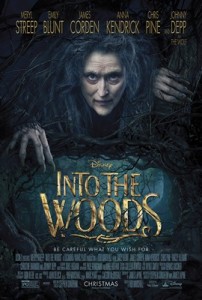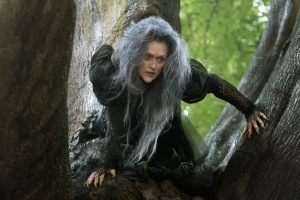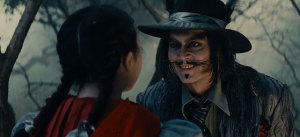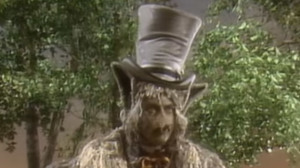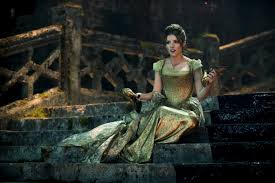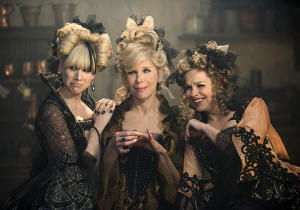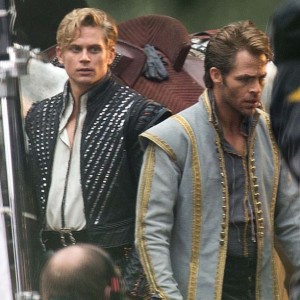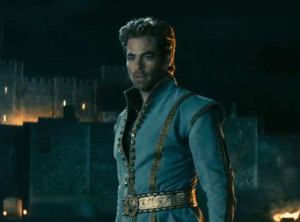Jeff Goins’s book, Real Artists Don’t Starve, was quite an enjoyable read. The information in it is not new or groundbreaking in most respects, but it is excellent for artists of all types. And frankly, sometimes we need to hear the same things over and over before we are able to truly absorb and act on them. (To be clear, this does not mean that those who spoke the message to us earlier were failures. It simply means that it takes time for some messages to saturate, and often each application/hearing of the message results in pushing us closer toward that goal).
The book brought about a series of responses within me, and I wanted to deal with them in separate blog posts.
One of Jeff Goins’s points is that great artists steal. He provides multiple examples, and he then clarifies that he does not mean plagiarism or theft theft. What he makes quite clear is that there are no new ideas and we all draw from somewhere. He also references how many of the masters copied other greats to learn the craft. His point, and I believe Picasso’s as well as the others who have used this phrasing, are referring to the fact that pretty much everything has been done. But Jeff Goins and others refer to this as stealing.
This struck an emotional response within me that I struggled to interpret. It isn’t that I deny artists draw from sources. We are the sum of our ideas and experiences, which are often drawn from others in both firsthand accounts as well as books, movies, television, art, and more. What we experience becomes a part of us and then bleeds into our work. But I don’t particularly care for the word “steal.” Partially because I’m a lawyer. Stealing is wrong and morally problematic. It destroys trust and breaks down community. Jeff Goins’s isn’t the first one to say that artists steal. And again, he makes it clear that a true artist reorganizes, adds more, and reimagines what is taken.
The use of the word “thief” is more provocative than descriptive.
Yet still I find myself struggling. And I found myself reflecting on four experiences in particular with what I would describe as four types of “thieves.”
(Note: I will cover reboots and remakes in another post as those are different from this as well.)
The Painter: A Reprehensible Thief
When I was fourteen, I officially started calling myself a freelance writer. The only thing I had was an Internet connection and a basic understanding of Google. Without much concern for theft, I drafted and sent out stories to every place that would take them. Including a number of e-zines. One story was The Color of Murder, a tale about a serial killer known as the Painter who had a very specific method of killing and purpose to his madness. In looking back, the story wasn’t particularly good. I got a rejection from an editor with a note that the story needed work.
That was true. The story disappeared into a file with hundreds of others, and I didn’t touch it. Until one day I was on a popular writing website and noticed a story called, The Color of Murder. There were a couple of stories out with that title, but curious, I clicked on the story and found that it was actually mine. Word for word. The author listed on the page was none other than the editor who had rejected my story.
Unfortunately for her, I still had that rejection email along with many others. Even more unfortunate for her was the fact that within the span of the last sixteen years, I had grown up, gone to law school, and become an attorney. Contacting her with the evidence resulted in what I wanted: the story being taken down.
This woman was clearly a bad thief. What she did was illegal, wrong, and in no way something that a professional would recommend. This is actual theft. Outright plagiarism. Getting in touch with the thief resulted in the story’s removal from the site.
(Also, how’s this for a bit of dark humor? Almost all the comments she got on the story were quite negative. I mean, really, what do you expect posting a fourteen-year-old’s interpretation of a serial killer who uses the blood, bones, and organs of his victims to create paintings? The concept is intriguing and something I hope to do something with in the future, but the story as it was absolutely deserved to be rejected. I find it laughably horrid that she would steal, not only from a child, but a bad story at that! There was literally no upside to her in this situation.)
This sort of theft is unacceptable. If you do it, you are not a good member of the artistic community, and most likely you will soon be ousted from the community and may face legal consequences.
The Mermaid: A Cruel Thief
Partially thanks to my sister, I love mers. She does gorgeous drawings, and when we were little, I used to whisper her stories about mers and fantastic worlds that we could only dream about. We both inspired one another, and many of the stories I drafted involved various interpretations of mer worlds. Some were set on Neptune or elsewhere in space, some in lands accessible only through magical portals, and still others in rivers and oceans in our own world.
My hope one day is to create a gorgeous series that showcases some of the fascinating mers that my sister has created and that populate some of my stories. I shared some of these with someone who I thought was a friend, and I was so excited. The first two stories were nearly done (we often swapped stories for critiques). My friend seemed excited by them as well. She mentioned that she particularly liked the worldbuilding aspect and the inclusion of multiple races and the way that they intersected.
To my surprise, a few days later, she posted in a writing group about a new story she was writing in which she used my identical ideas and renamed characters. Multiples of my ideas and plot actually. The sense of betrayal and shock I felt was enormous. Now, I knew that I had no legal claim to the ideas. Ideas cannot be copyrighted. But this was my friend. She hadn’t told me in advance. She hadn’t even asked if I would mind. Technically, this was not required.
I would argue though that this was cruel and not something that a good member of the artistic community would do. Legally she was fine. Ethically, not so much. When I asked her about it and tried to explain how I felt, she curtly informed me I didn’t own the idea and she could do what she wanted. The friendship ended soon after that.
When it is your friend who comes up with the idea and you want to do something almost identical, it may be best to have that conversation with your friend out of courtesy. Proximity makes it trickier than if you got the idea from a TV show or out of a book.
If you already had the idea, you can mention this to your friend. But to keep the air clear between you, open communication is best. It’s also vital to ensure you do then what Jeff Goins recommends, which is to add in multiple ideas. The more you add, the less problematic it will be.
I would also add that if someone winds up being a tremendous source of inspiration or gives you an idea for something, it would also be kind to thank and acknowledge that person for their contribution. Particularly if it’s going to be quite similar to something they are releasing at the same time. Legally you’re under no obligation, but if you want to keep your creative friends, it’s best to err on the side of caution and courtesy.
The Dragon: A Clueless Thief
One of the things I’ve mentioned before is how I am hoping to soon finish a fantasy series that I started about twenty-five years ago, Tue-Rah Chronicles. I was about six years old when I first started, so clearly a lot of that time has been spent learning how to do it. This series has grown with me, and it has played a tremendous role in my life and development. The characters are as real and vivid as the people I know in some respects, and I enjoy talking about them.
In a writing group, I became friendly with another author. She and I chatted off and on, discussing what we were working on. I told her about my story and my absolute favorite character, a shapeshifter who can become anything with wings but who specializes in dragons. He is one of my favorites because he started off as one of my imaginary frenemies when I was a child, and he is one of the first I ever created. His personality is quite clear to me, and as a result, it’s incredibly easy to write him.
A month ago she announced the release of her story, a novella that featured a main character who was a dragon shapeshifter and whose name was simply a different spelling of my character’s. He also shared the same personality features and had a puzzle box that contained pencil sketches of his wife and children, something which he fidgeted with when thinking and which played a significant role in his arc. There were a number of other similarities too that hinged a little too close for comfort.
Perhaps it was because of the previous experiences or because of how much I loved that specific character, but it stung. Badly. I felt betrayed, and I couldn’t help but wonder if she’d stolen the idea from me. The fact that I was getting ready to go to final edits for my beloved epic and at last release it into the world made this hurt all the more.
Now, in this case, I had no intention of confronting her. The story itself, though similar in some minor respects, was largely different even if our characters were almost the same. I wasn’t sure what to even confront her about though I did decide I would not talk to her about what I was working on again. When I confided my pain and frustration in one of my closest friends though, she suggested I talk to this author. As I admitted, it was possible that this was unintentional. After all, our conversation happened months ago, and sometimes people absorb experiences, then forget where it is they got the idea from. (And sometimes people get largely similar ideas without even interacting with one another.)
So I contacted her and brought it up in the least accusatory and kind way I could. She responded almost immediately and apologized, stating that she remembered now but had forgotten our conversation when she was in the middle of writing. She apologized, and I was grateful to know it wasn’t intentional.
I sometimes worry I may have done something like this. It would be something of a nightmare if I did because I don’t want to hurt my fellow artists.
But this isn’t such bad territory. If someone did have to confront me about this, I would likely handle it the same as my friend and apologize and see if there was a way I could fix the situation and keep a good relationship with the other author. And that’s more in a situation when there’s an actual conversation.
In situations where the other author has no way of knowing what you are working on or you haven’t had that conversation, then it’s probably best to leave well enough alone. Lots of ideas get repeated.
The Elementalist: A Good Thief
The Tue-Rah Chronicles features a lot of different races, including some elementalists. In the chapters I released on Wattpad, I have developed some of them through the main story and others through short stories, and I have received a fair bit of feedback from readers, many of whom are also writers.
The other day, one of these readers messaged me to say that she had written a story of her own about elementalists. She mentioned that she had been inspired by the combat style that the elementalists used as well as their culture and how their lifestyles influenced their strength with various elements. And she then wrote her own story. Not a fanfiction. Not a rip off. She wrote a story that took some of the ideas that I had, added a bunch of her own, and created a whole new conflict and set of characters. In essence, she made it her own.
When she finishes this story, it’s going to be amazing. I couldn’t be happier for her. It was also quite cool to see how I was able to positively influence her as so many others have positively influenced me.
The fact that she added to the story and changed up the idea made all the difference. Her letting me know about it wasn’t necessary. If I had read her story without knowing about it, I would have noted some similarities but oddly I wouldn’t have thought she had ripped me off.
And really I wouldn’t even call her a thief. I think that this is the one where calling such a person a thief bothers me the most. She didn’t steal the idea from me though she did get it from me. I suppose if I were to make it a metaphor, I’d say that she ate the fruit of my story, took some of the seeds, spliced in components for other seeds, and grew her own kind of fruit.
Ultimately I don’t think I would call people in the second two categories thieves (particularly since in the case of The Dragon, she did not do it intentionally). Though I take the point, I feel that that minimizes the actual meaning to call such people thieves, particularly when there are actual thieves out there. Even if you see an idea in a movie and decide you want to play with it, if you do it right, you aren’t stealing it. You are adapting it. Or at least that is what you should be doing. By referring to all as thieves, I feel that this dilutes the meaning when one is trying to talk about actual wrongdoing.
The purpose of referring to all artists as thieves is, in part, to calm creators down and help them realize that nothing truly new. People who insist they have something utterly unique and that has never been done are usually demonstrating a skill in puffery or their lack of knowledge. But can’t we accomplish this by simply referring to the fact that we all draw inspiration from all around us? We drink from a common river. We don’t steal from it.
And maybe the reason that this bothers me most in the fourth case is because no one owns ideas. No one. What we own are the words we put together and the take that we give them, the perspective we bring. Even in the case of The Mers, my story wound up being quite different from my former friend’s because, though she took my concepts, she didn’t tell it the way I planned to.
Maybe this is just semantics. I’m not entirely certain, but this over reference does bother me, perhaps because I deal with actual thieves. What are your thoughts? Do you think it’s right to call all artists thieves? Is the understanding of implied conduct enough? Or is there something that we lose by referring to everyone as a thief? Is there a better word?
